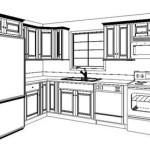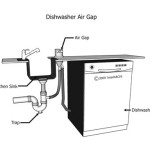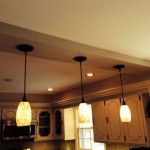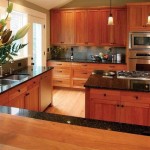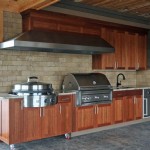How To Properly Organize Kitchen Cabinets
Kitchen cabinet organization is a crucial aspect of maintaining an efficient and functional kitchen. Disorganized cabinets can lead to frustration, wasted time, and even unnecessary food waste. Implementing a systematic approach to organizing kitchen cabinets can significantly improve the overall cooking experience and enhance the aesthetics of the kitchen space.
A well-organized kitchen cabinet system contributes to several benefits. It facilitates effortless access to stored items, allowing for a quick and easy find when preparing meals. Moreover, a structured arrangement helps in inventory management, minimizing the chances of purchasing duplicate items and maximizing the utilization of existing resources. Furthermore, optimized space utilization makes the kitchen look neater and more appealing, fostering a more pleasant environment for cooking and entertaining.
Before embarking on the reorganization process, careful planning is essential. This involves assessing the current state of the cabinets, identifying areas of improvement, and determining the desired outcomes. By taking a strategic approach, the reorganization process can be streamlined, leading to more satisfactory and long-lasting results.
Step 1: Empty and Assess
The initial step is to completely empty all cabinets. This allows for a comprehensive assessment of the contents and provides an opportunity to thoroughly clean the shelves and interiors. As items are removed, categorize them into distinct groups, such as cookware, pantry staples, utensils, and serving dishes. This preliminary classification will serve as the foundation for organizing the items when they are returned to the cabinets.
During the emptying process, it is crucial to inspect each item for its condition and usability. Identify items that are broken, damaged, or no longer needed. Discard or donate these items to declutter the cabinets and create more available space. It is also advisable to check expiration dates on food items and dispose of any expired products. This practice helps prevent the storage of spoiled goods and ensures that only fresh and usable ingredients are retained.
Once the cabinets are empty, thoroughly clean the shelves and interiors. Use a mild detergent and warm water to remove any dirt, dust, or food residue. Allow the surfaces to dry completely before returning any items to the cabinets. This step is essential for maintaining hygiene and preventing the buildup of bacteria or mold.
Assess the existing shelving configuration. Consider whether the current arrangement is optimal for the types of items being stored. If necessary, adjust the shelf heights or add additional shelves to maximize space utilization. Evaluate the potential for incorporating organizational accessories, such as shelf dividers, drawer organizers, or pull-out baskets. These accessories can significantly improve the organization and accessibility of items within the cabinets.
Step 2: Strategically Zone and Categorize
Zoning is the key to efficient organization. Assign specific areas within the kitchen for different categories of items. Locate frequently used items in easily accessible locations, while less frequently used items can be stored in higher or lower cabinets. Group similar items together within each zone to streamline the retrieval process.
The area near the stove is typically designated for cookware, such as pots, pans, and baking sheets. This placement ensures that these items are readily available during meal preparation. Utensils, such as spatulas, whisks, and measuring cups, should be stored in a drawer or container near the stove. This arrangement allows for quick and easy access to these essential tools while cooking.
The area near the refrigerator is often allocated to pantry staples, such as canned goods, dry goods, and condiments. This proximity allows for convenient access to ingredients when planning meals or preparing snacks. Store canned goods on shelves or in tiered organizers to maximize visibility and prevent the stacking of cans. Dry goods, such as flour, sugar, and pasta, should be stored in airtight containers to maintain their freshness and prevent infestation.
The area near the sink is commonly used for storing cleaning supplies, such as dish soap, sponges, and cleaning solutions. This placement facilitates easy cleanup after meals. Use organizers to neatly arrange cleaning supplies under the sink and prevent clutter. Consider installing a pull-out waste bin under the sink to maximize space efficiency and maintain a clean workspace.
Serving dishes, such as plates, bowls, and platters, can be stored in cabinets near the dining area. This arrangement facilitates easy access when setting the table or serving meals. Stack plates and bowls neatly to conserve space. Use plate racks or dividers to prevent the shifting or breakage of dishes. Store platters and serving bowls in a vertical position to maximize space utilization and prevent clutter.
Step 3: Implement and Maintain Organization
Once the zoning and categorization are established, begin returning items to the designated areas. Place the most frequently used items in the most accessible locations. Utilize organizational accessories to maximize space utilization and improve accessibility. Maintain a consistent system for storing items to ensure long-term organization.
Consider using clear storage containers for pantry staples. This allows for easy identification of contents and prevents the need to rummage through the cabinets. Label the containers clearly to further enhance organization. Utilize adjustable shelving to accommodate items of different sizes and shapes. This maximizes space utilization and minimizes wasted space.
Employ drawer organizers to keep utensils, silverware, and kitchen gadgets neatly arranged. This prevents items from shifting and becoming disorganized. Use dividers to separate different types of items within the drawers. Consider using a knife block or magnetic knife strip to safely and efficiently store knives. This frees up drawer space and prevents accidental injuries.
Regularly declutter the cabinets to maintain organization. Periodically review the contents of the cabinets and discard or donate any items that are no longer needed. Check expiration dates on food items and dispose of any expired products. Wipe down the shelves and interiors regularly to prevent the buildup of dirt and dust.
Consistently return items to their designated places after use. This prevents the accumulation of clutter and maintains the organization of the cabinets. Encourage all members of the household to adhere to the established organization system. A collaborative effort is essential for maintaining a consistently organized kitchen.
Consider implementing a "one in, one out" rule for new purchases. Before purchasing a new item, evaluate whether it is truly needed and whether there is sufficient space for it in the cabinets. If a new item is purchased, discard or donate a similar item to prevent over-accumulation. This helps maintain a manageable inventory and prevents the cabinets from becoming overcrowded.
By following these steps and maintaining a consistent approach, a system can be implemented that contributes to a more efficient, functional, and visually appealing kitchen space. The time invested in organizing kitchen cabinets will result in long-term benefits, making cooking and meal preparation a more enjoyable experience.

How To Organize Your Kitchen Cabinets In 3 Simple Steps Practical Perfection
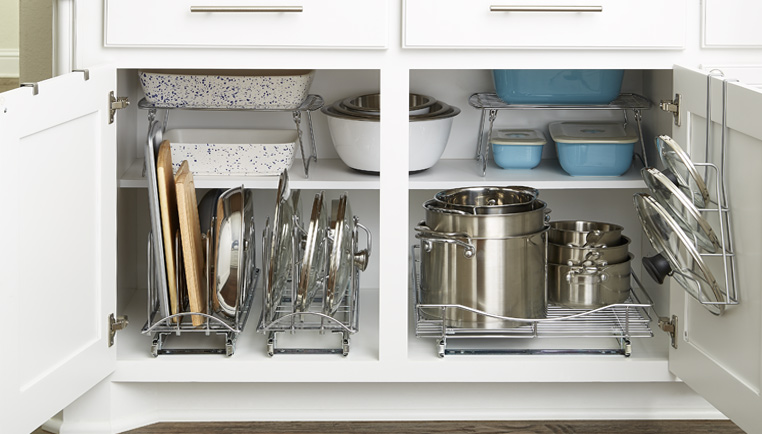
How To Organize Your Kitchen Cabinets Step By Project The Container

How To Organize Kitchen Cabinets In 9 Simple Steps Trusted Since 1922

How To Organize Your Kitchen Cabinets And Pantry Feed Me Phoebe

60 Clever Cabinet Organization Tips To Double Your Storage 2024
:max_bytes(150000):strip_icc()/crop-silvery-blue-cabinets-2000-70acba9f5faf464aa377714297d92570-a9692c7ba11e44ac86bc8f41c0a9fb42.jpg?strip=all)
How To Organize Your Kitchen Cabinets According Experts
21 Ways To Organize Kitchen Cabinets Declutter

25 Best Ideas For How To Organize Kitchen Cabinets

How To Organize Kitchen Cabinets And Drawers For Good

Pin On Kitchen
Related Posts

